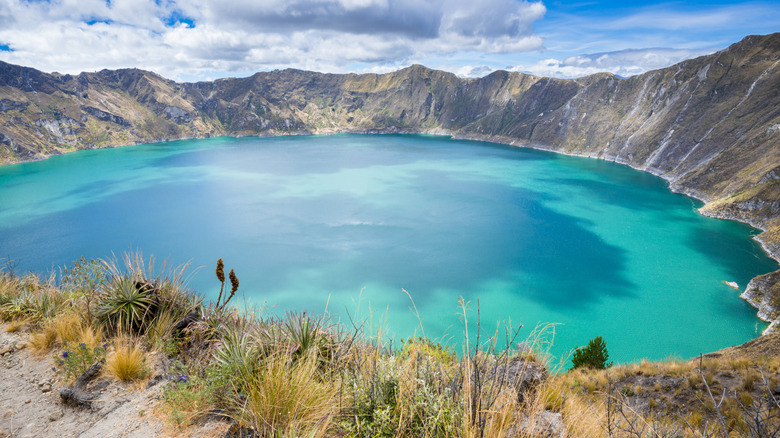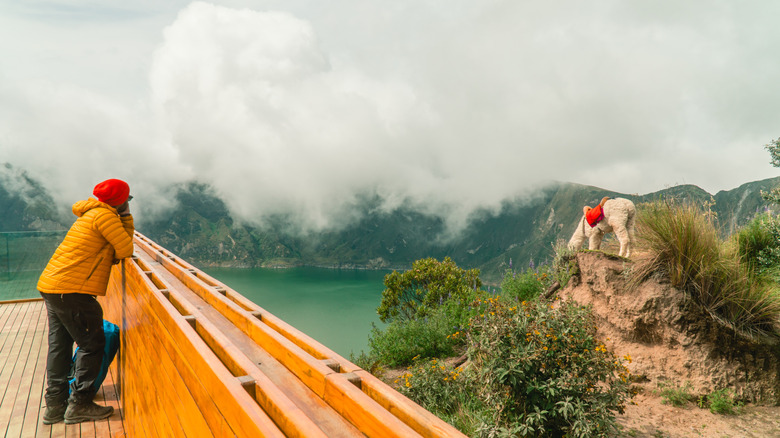Step after step, as you breathe in the rarefied air, you finally reach the top of a demanding trek uphill. The reward is right in front of you: an almost perfectly round ring of deep emerald water, its waters glimmering with the reflection of the sunshine. It may take some effort to reach Ecuador’s secret crater lake, but once you make it to the final destination, you immediately realise you’re being let in on a precious secret.
Nested in the rural Andes, the beautiful Quilotoa Crater Lake has managed to keep its wonders known only to a few souls. You’re not likely to encounter any crowds on your tranquil trek around the lake, once a volcanic caldera in this fiery area of the Ecuadorian mountains. The highest point sits at 12,480ft (3,914 meters) above sea level, making it challenging for travelers who are not used to high altitudes. Local guides recommend beginning to acclimate to altitude a couple of weeks in advance, for example, by taking supplements. It’s also recommended that you gradually ascend towards the highest point and stay well hydrated throughout.
You can reach Quilotoa from the buzzing Quito, one of the most underrated cities in South America, which is a three-hour drive away. Alternatively, the nearest town to Quilotoa is Latacunga, which is about 90 minutes away by car on the Panamericana Highway heading south. Quilotoa Crater is also connected to Latacunga by public transport, with three departures a day from the town center.
As long as you are hungry for adventure, this land of waterfalls, biodiversity, and high-adrenaline will keep you well fed with some of the most stunning places you have ever visited.
Take in the views of Quilotoa Crater by following a scenic trail
The best way to explore the Quilotoa Crater is by following the hiking loop around it. Not only can you stop at different points to take in scenic views and collect snaps, but you can also descend towards the banks of the lake to see it up close. The descent is estimated to take between 20 and 30 minutes on sandy terrain. It’s worth flagging that hiking uphill may be more difficult, especially in conditions of wind or rain.
Make sure you don’t miss the many wooden lookout platforms (“miradores”) that dot the trail. Many people start their trek from the Mirador Shalalá, a feat of architectural beauty where the warm hue of the wood and the sharp green of the lake create a magical contrast. If you want to start your adventure somewhere convenient, Shalalá has a fully-equipped Tourist Center with a car park, restrooms, and a camping area for those who want to sleep under the stars. Access costs $2 per person upon entry, and a further $5 per day if you wish to camp. The visitor center is just on the edge of the crater, so you can start your trek easily from here.
Following the main trail, you can reach the Cotopaxi refuge and national park. There, you can marvel at the peak of the Cotopaxi volcano, one of the highest active volcanoes across the globe. It’s important to note that this trek is a particularly challenging one, so embark if you are feeling your skill and energy levels match a hike that may take as long as four or six hours to the top.




